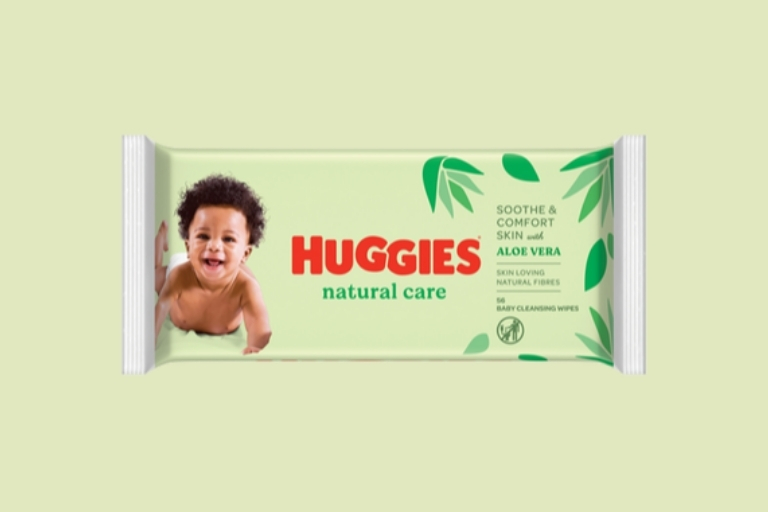What age do babies start walking?

Ready, steady, go!
From the first time your baby rolls over, to crawling, sitting, pulling up, standing, bouncing, dancing, cruising and walking, there are so many developmental stages to be celebrated.
Here’s what happens when that little human of yours decides life doesn’t stand still - so neither should they! It won’t be long before your baby will take those incredible first steps alone – though this stage can be at any age from eight months to two and a half years.
We asked British psychopathologist and Professor Lynne Murray, who specialises in child development, to help us understand the journey.
From four months – rolling
By this time, your baby’s arm and leg, back and abdomen muscles are starting to get stronger as they make all those cute moves like kicking and waving their arms around. Of course, this is an ongoing process, as muscle tone has to keep up with your baby’s weight.
You can help your baby to reach this stage by allowing plenty of tummy time, which encourages mini push-ups. Your little one will also raise the head up to see what’s going on, strengthening the neck too. Gradually, your little one will learn to push down on one side and roll over, first from front to back and then back again.
Safety tip: Now is the time to lower your cot mattress base so your baby can’t roll out and only use a Moses basket when your little one is by your side. If you have a bouncy chair, make sure it has a sturdy base and again, don’t use it when your baby is unsupervised. Get a tummy time playmat and cushion.
From six months - sitting
This uber-exciting milestone leads to others, the most important of which will be weaning. When your baby can sit up and has mastered holding his head up, they will be able to start those first tastes of yummy baby food at six months.
All babies learn to sit in their own time, with some starting the process at four months, while others won’t get there for a while – though rest assured, they all get there! What’s needed for sitting up is a good sense of balance and having strong neck, back and tummy muscles.
Want to help and encourage your baby’s efforts? Prop them sitting up in the corner of the couch, supported by cushions or in a baby seat or a highchair that has a recline feature.
Safety tip: Look for a baby chair with good pelvis and leg support. Put this on the floor (not on a table and never near stairs) and always be with your baby while they are in it, in case they roll over. Never let your little one fall asleep on the sofa.
From eight months – crawling
Crawling, shuffling, rocking, bouncing, scooting – babies all have their own way of doing this and some babies don’t crawl at all, going straight to walking.
Starting off on their tummy, your little one will manage to tuck a leg or arm underneath and from there will discover how to move forwards - and they’re off! If you find nappy changes difficult at this stage, switch to Huggies® Pull-Ups® instead.
Safety tip: Anything breakable in your baby’s reach? Move it up! You’ll now need to start baby-proofing your home.
From 10 months – baby cruising
If you’re wondering when babies start cruising, it’s from the moment their arm muscles get strong enough to pull themselves up, supported by furniture - or by you! Baby cruising is the stage between crawling and walking.
It’s not yet possible for your baby to stand unaided, nor to coordinate the body for serious walking, so you can help out by holding onto your baby’s hands. This exciting stage helps those little leg muscles get stronger and also hard-wires the brain to work out how to get all the different body parts working together.
Safety tip: Any items your baby tries to pull up on should be sturdy and fixed, especially larger pieces of furniture such as chests and cupboards. You can fix them to the wall with special ties and you’ll also need stair gates.
From 12 months – baby’s first steps
From rolling to kneeling, to cruising and pulling up, a few toddling steps is the next exciting developmental stage. Learn how to strengthen your baby’s legs by holding them upright and allowing them to push up and down – like baby squats! Soon the leg and torso muscles get strong enough to allow more movement - and your baby’s clever little brain starts to cope with this new position. Some ask, is walking early bad for babies? As long as you don’t push your baby to do too much, be guided by them.
Safety tip: Let your baby have lots of time to practise and think about getting a baby walker to help encourage more steps and prevent bumps.
steps baby shoes
Should babies wear shoes when they start walking? The best advice in the early days is to leave your baby barefoot, as any restrictions can damage the soft bones of the feet. If it’s cold, some socks with non-slip pads can be good. You can get some very soft pram shoes or pre-walkers to wear when outside. First steps baby shoes should be fitted by an expert when your little one is walking and running about with confidence.
Your final tip?
For anxious parents wondering when their baby will walk, don’t! They all get there in the end. Just enjoy the journey – and let them know how proud you are of them, every shuffle of the way. In the meantime, it’s probably worth getting started on baby proofing your home...













